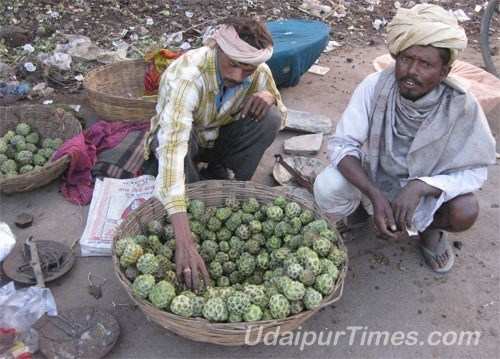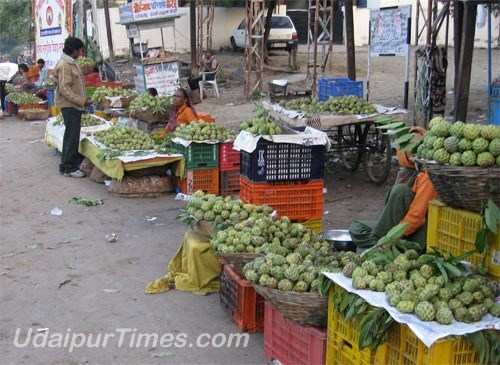Sitafal: Desi Fruit in Demand
Good food and best clothes, winter is definitely to enjoy the nature and everything it provides us. If we talk about fruits, we can enjoy lots of citrus fruits in winter but one fruit is bit odd than any other fruits, that’s Sitafal. Sitafal is in demand in every winter season. Especially in Udaipur, there are many who just love this wild fruit. Every winter Sitafal becomes the first pick by people of all age group, whether a school kid, a working executive or an elderly person.
Good food and best clothes, winter is definitely to enjoy the nature and everything it provides us. If we talk about fruits, we can enjoy lots of citrus fruits in winter but one fruit is bit odd than any other fruits, that’s Sitafal.
Sitafal is in demand in every winter season. Especially in Udaipur, there are many who just love this wild fruit. Every winter Sitafal becomes the first pick by people of all age group, whether a school kid, a working executive or an elderly person.
Though it is popularly known as Sitafal but the actual name is Sugar-Apple and its scientific name is Annona Squamo. Sitafal belongs to the species of Annona native to the tropical America and it is widely grown in the regions of India and Pakistan.
Sitafal is rich in calories and turns to be a good source of iron. It is used by some societies in India to prepare a hair tonic. The seeds of Sitafal are also rich as they are grinded and applied to hair to get rid of lice; however, at the same time it must be kept away from the eyes as it is very irritant and can cause blindness.
This fruit has an interesting history attached to it in respect to its name i.e. Sitafal. Mythologically it is said that Sita, wife of Lord Rama during her vanvaas used to eat this fruit. While some texts says that when Ravana was abducting Sita, at that time the drops of tears from her eyes and nose fell onto the ground and they gave birth to Sitafal trees in the wilderness. Although, many people believe that sitafal has nothing to do with Sita. Its origin is in Sanskrit i.e. “sheet” in hindi means cold and “phal” is fruit and having excess of it can give you cold and also it has a cooling effect on your body so hence the name is Sitafal.
Sitafal sellers who mostly come from nearby villages can be seen in every big and small corners of the city. There are around 20-25 sitafal sellers who sit around Shastri Circle. You can also find a number of sellers in areas near Suraj Pol and Delhi Gate. Average sale per day of sitafal is estimated around 25-30kg per day by a seller. “About 20 quintals of Sitafal is sold in Udaipur City” says Khumaram, a Sitafal seller from a nearby village – Jargaji. For the locals of Udaipur, this fruit mainly comes from the wild forests of Abu-road belt.
If I give my personal views for the fruit then I seriously don’t like it as the reason being the way it is to eat, I’m not comfortable with the fruit and that makes me a critic of sitafal. One more point I would like to add here is that you might be surprised to know that Sitafal and its sweet, fleshy cousins – Ramphal, Lakshmanphal and Hanumanphal, these all actually have South American origins.
To join us on Facebook Click Here and Subscribe to UdaipurTimes Broadcast channels on GoogleNews | Telegram | Signal



